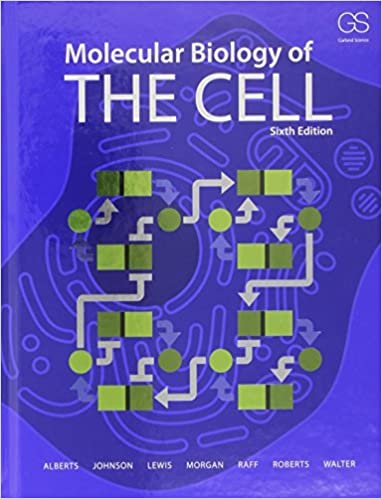
Molecular Biology Of The Cell 6th Edition by Bruce Alberts, Alexander Johnson, Julian Lewis, David Morgan, Martin Raff, Keith Roberts, Peter Walter
Edition 6ISBN: 978-0815345244
Molecular Biology Of The Cell 6th Edition by Bruce Alberts, Alexander Johnson, Julian Lewis, David Morgan, Martin Raff, Keith Roberts, Peter Walter
Edition 6ISBN: 978-0815345244 Exercise 7
Mortality due to lung cancer was followed in groups of males in the United Kingdom for 50 years. Figure Q20-1 shows the cumulative risk of dying from lung can- cer as a function of age and smoking habits for four groups of males: those who never smoked, those who stopped at age 30, those who stopped at age 50, and those who contin- ued to smoke. These data show clearly that individuals can substantially reduce their cumulative risk of dying from lung cancer by stopping smoking. What do you suppose is the biological basis for this observation?
A. Which of the two models in Figure Q20-2 accounts more readily for the features of these highly rearranged chromosomes? Explain your reasoning.
B. For whichever model you choose, suggest how such multiple rearrangements might arise. (The true mechanism is not known.)
C. Do you suppose such rearrangements are likely to be causative events in the cancers in which they are found, or are they probably just passenger events that are unrelated to the cancer? If you think they could be driver events, suggest how such rearrangements might activate an oncogene or inactivate a tumor suppressor gene.
A. Which of the two models in Figure Q20-2 accounts more readily for the features of these highly rearranged chromosomes? Explain your reasoning.
B. For whichever model you choose, suggest how such multiple rearrangements might arise. (The true mechanism is not known.)
C. Do you suppose such rearrangements are likely to be causative events in the cancers in which they are found, or are they probably just passenger events that are unrelated to the cancer? If you think they could be driver events, suggest how such rearrangements might activate an oncogene or inactivate a tumor suppressor gene.

Explanation
Cancer cell lines possess a remarkably d...
Molecular Biology Of The Cell 6th Edition by Bruce Alberts, Alexander Johnson, Julian Lewis, David Morgan, Martin Raff, Keith Roberts, Peter Walter
Why don’t you like this exercise?
Other Minimum 8 character and maximum 255 character
Character 255


